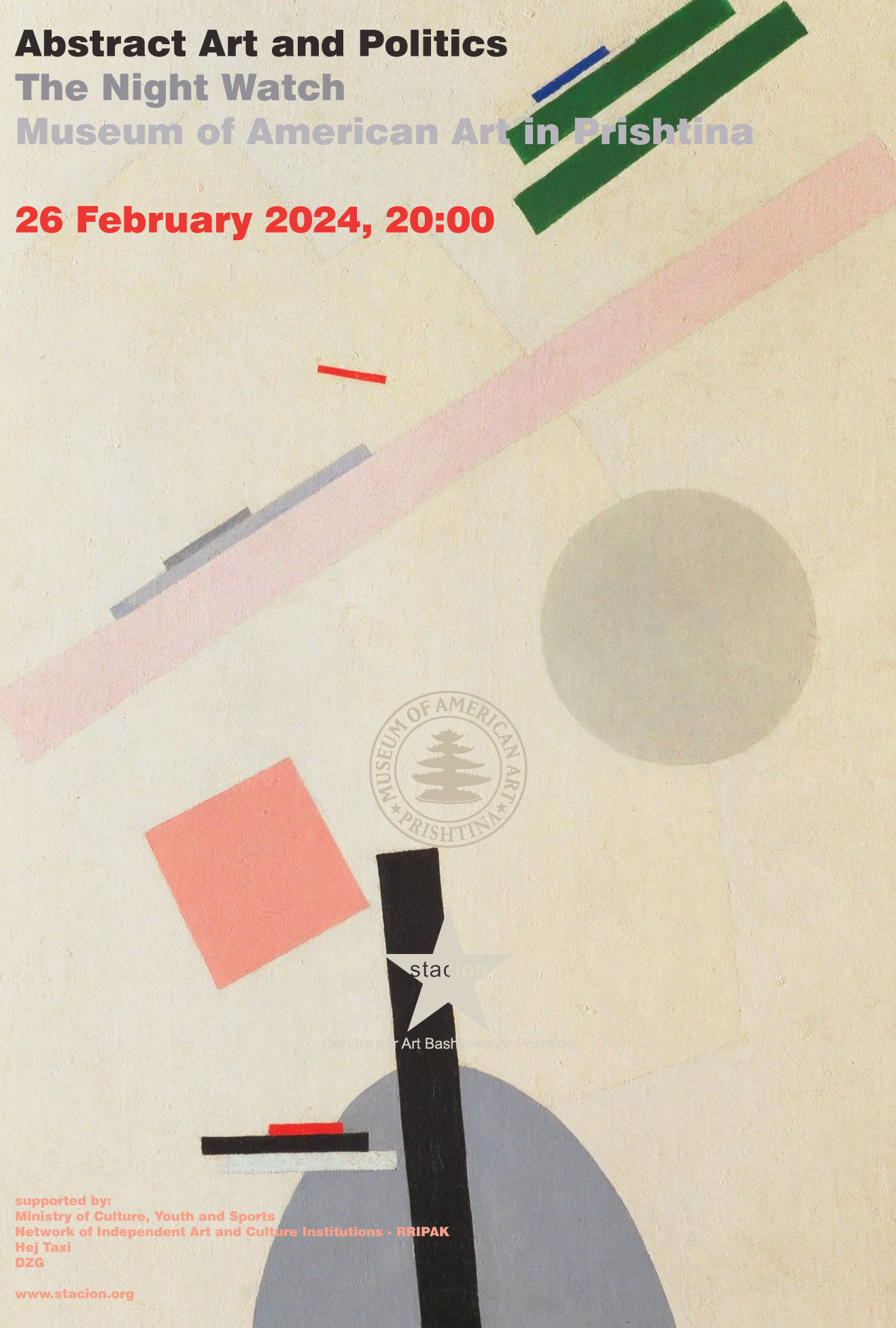
Abstract Art and Politics
The Night Watch at the Museum of American Art in Prishtina
26 February 2024 at 20:00
Henrik Bariç 23, 10000 Prishtina, Republic of Kosovo
Stacion – Center for Contemporary Art Prishtina and the Museum of American Art in Prishtina are pleased to announce the reading of the chapter “Abstract Art and Politics” from the catalogue “Cubism and Abstract Art” by Alfred H. Barr Jr. published in 1936, conceived in the framework of Activity 2 of the program "Empowerment of Cultural Engagement and Artistic Growth in Kosovo - FAKRRA".
Following the previous reading session of the same publication, which dealt with near-abstractions and pure abstractions, the dialectics of abstract art, near-abstractions and their titles, and abstract art and subject matter, this chapter is contextualized in the the years after the great war and the successive decades in between the two World Wars which saw an eruption of art styles completely different from those which had dominated before 1914, these styles not only represented an alternative and underground culture, but also saw themselves become integrated into political movements and systems which would come to dominate the global political landscape in countries such as USSR, Great Britain, France, Italy and Germany.
In the aftermath of World War I, the art world underwent a profound transformation, deeply influenced by the complex political landscape of the time. The art world found itself deeply entwined, evolving in response to the complex and often turbulent geopolitical climate. This era witnessed a multifaceted development of art styles, each reflecting and influenced by the prevailing political ideologies, both overtly and subtly. In essence, the art of the post-World War I period served as a mirror to the complexities of its time, reflecting and responding to the intricate interplay of politics, society, and culture.
Utilizing art as a political tool was not a new invention, it’s a method of policymaking as old as civilization itself, if not older. What made this an unique situation was the fact that for the first time in history, art which upended the previous norms of artistic representations was now becoming a mainstream style, pushed forward by strong early 20th century ideologies, which were reshaping human societies in a manner never seen before. Whether it be Futurism in Italy being driven forward by Fascist ideology, Suprematism in USSR being embraced by the communist state or the Bauhaus ideas of Weimar Germany; each were utilized for creating a new society in a new world, which had just emerged from the most destructive war, it had witnessed yet.
The years ahead promised unlimited potential for artistic experimentation and expression, backed by powerful states with imposing ideologies.
+
This event and the series are part of research and learning exercises, part of the laboratory of the educational program of the Museum of American Art in Prishtina, part of the of Activity 2 of the program "Empowerment of Cultural Engagement and Artistic Growth in Kosovo - FAKRRA".
The program is a programmatic intervention of Stacion – Center for Contemporary Art Prishtina that is based on continuous surveys and research of the current circumstances in independent institutions, the scene of art and culture in Kosovo and developments in public policies and public institutions, and institutions part of the Ministry of Culture, Youth and Sports.
+
The reading material is available in English.
+
The event is limited to 10 participants. Register for the event by sending an email to info@stacion. org to confirm your participation)
+
Image credits: Kazimir Malevich, Suprematist Painting, 1916-1917, Museum of Modern Art - MoMA
Poster by DZG